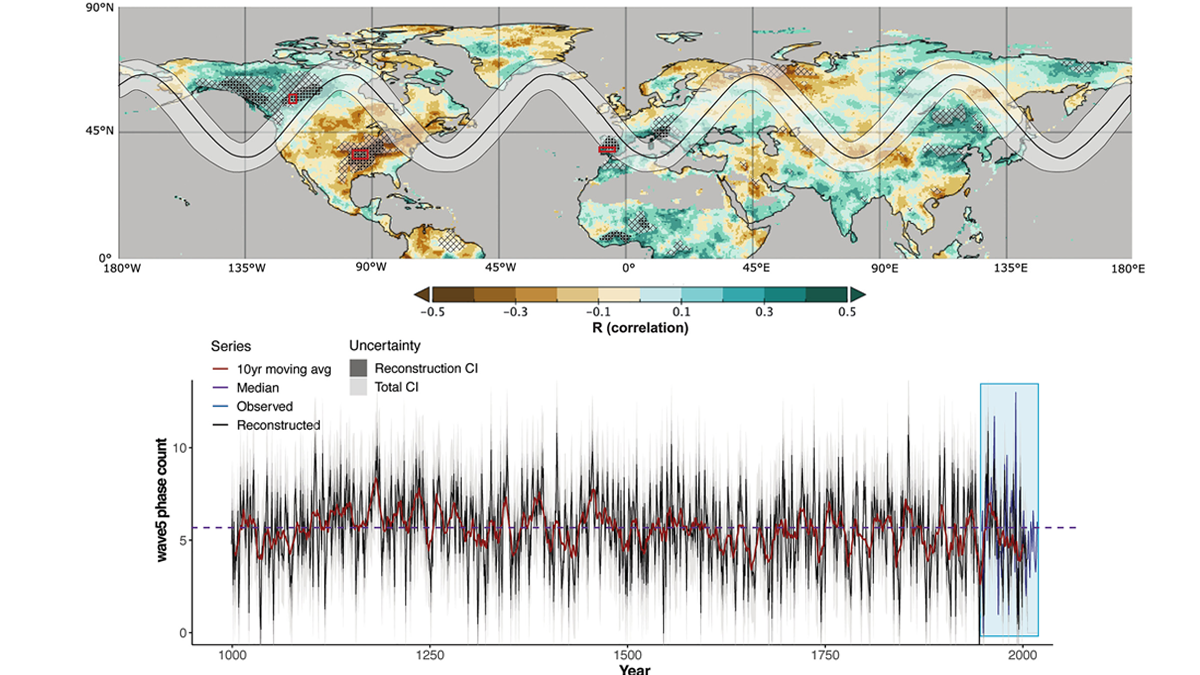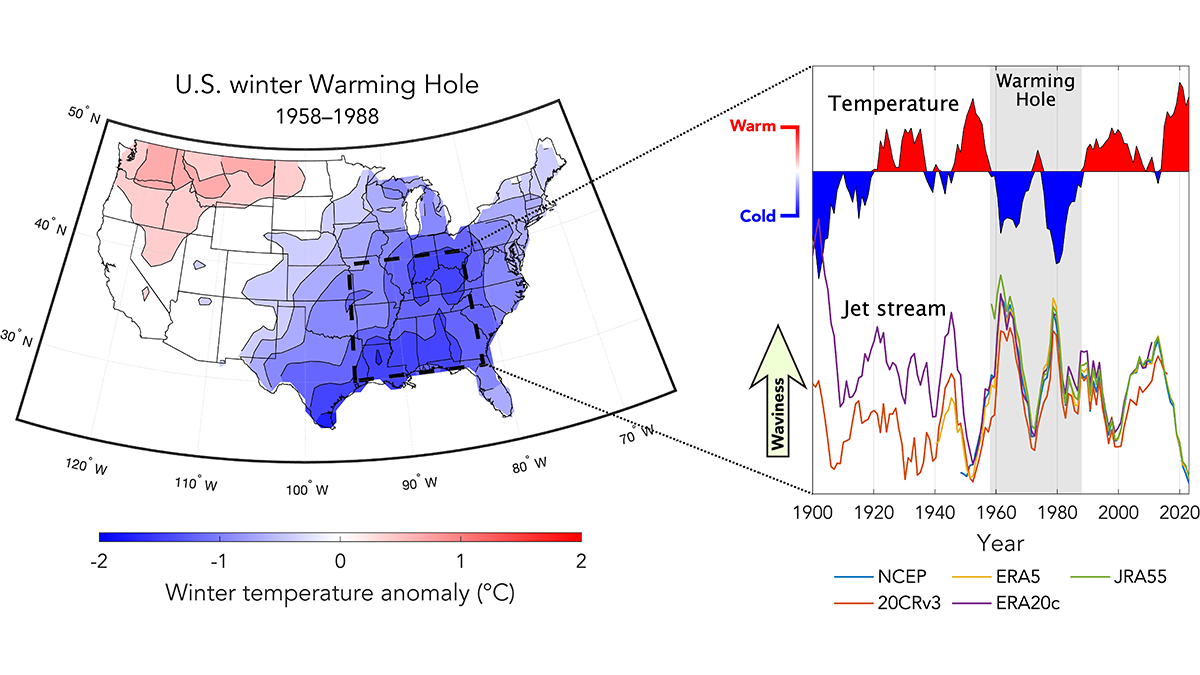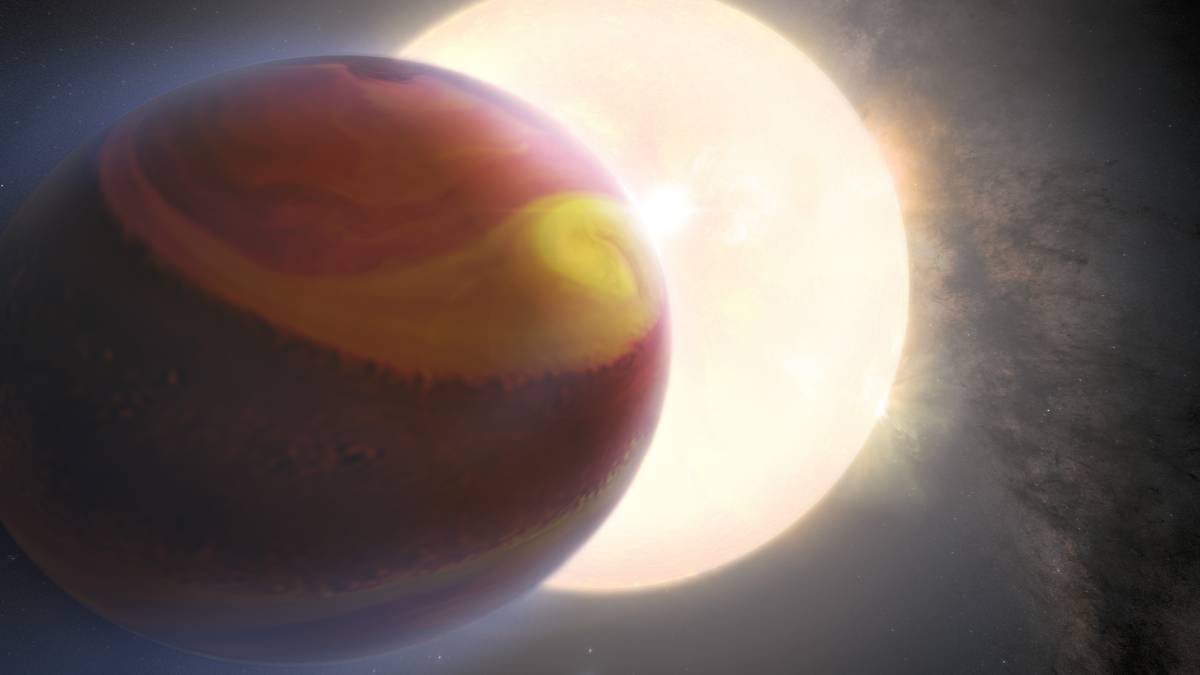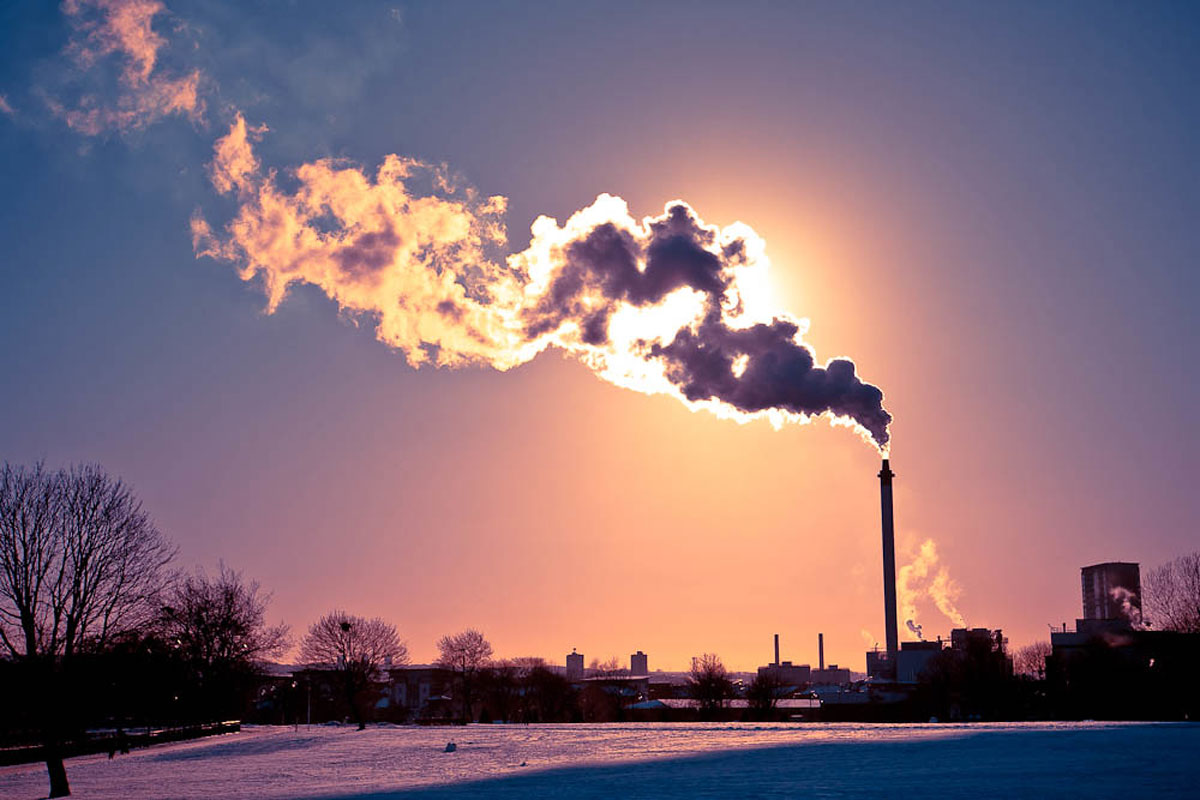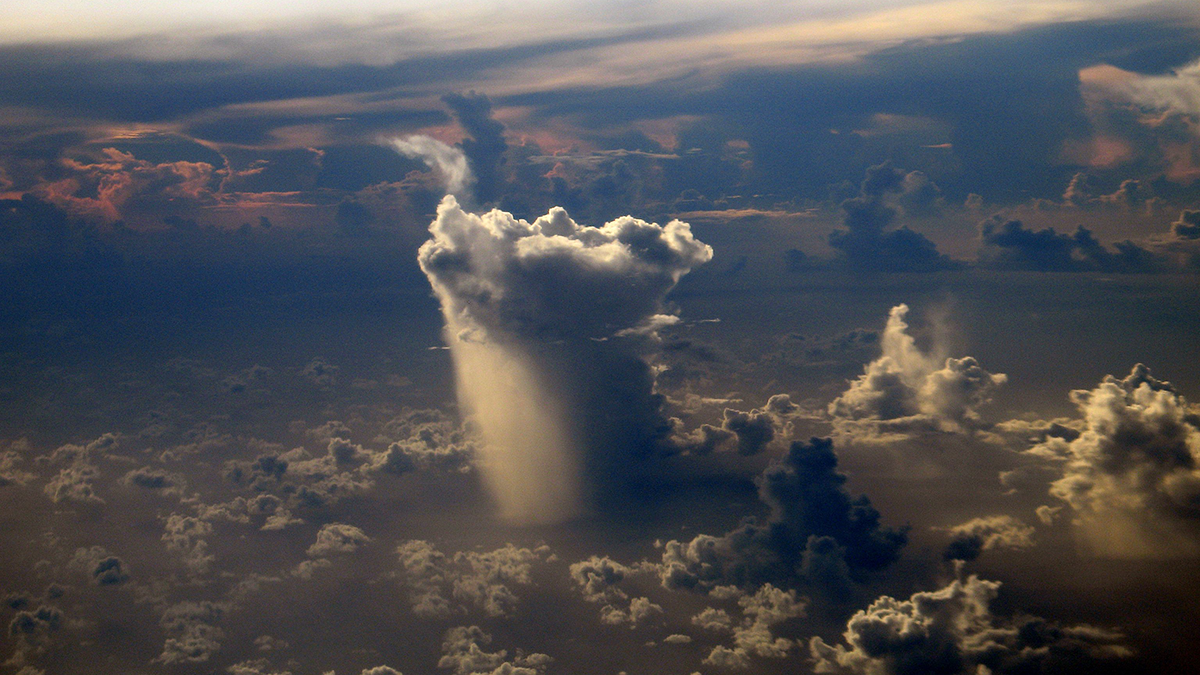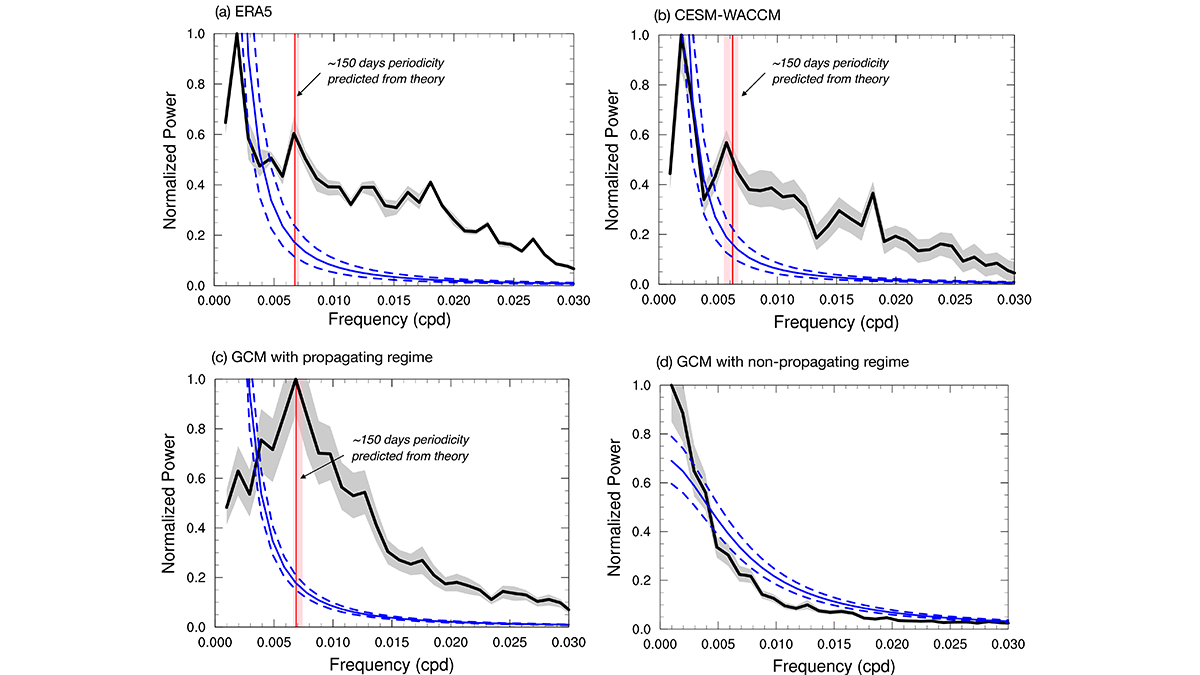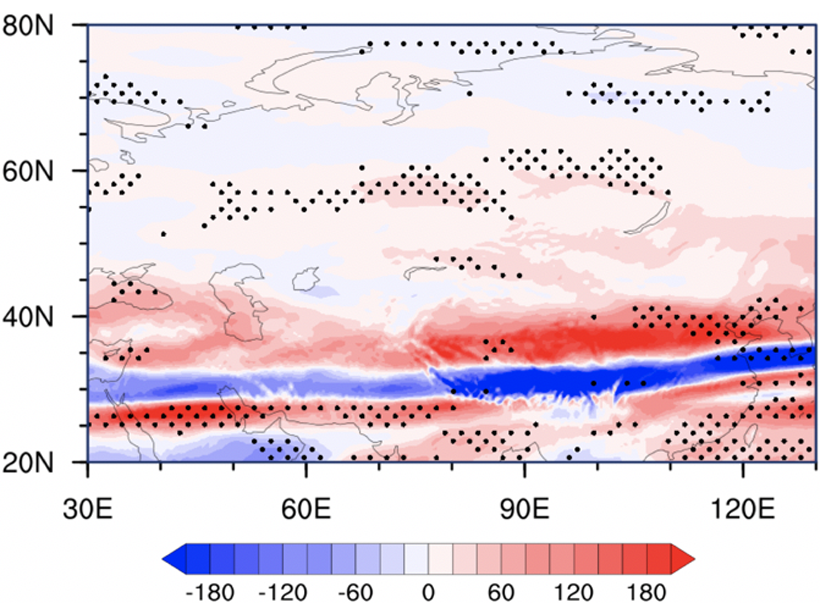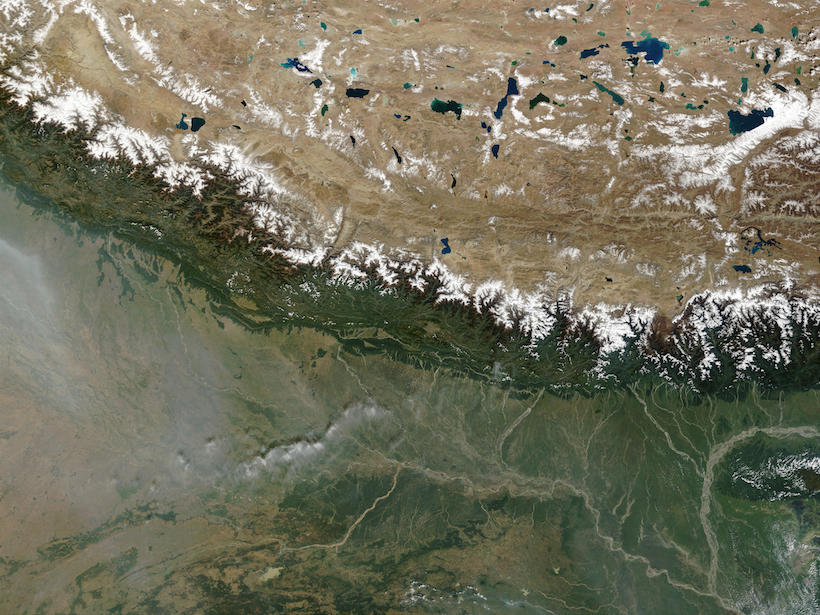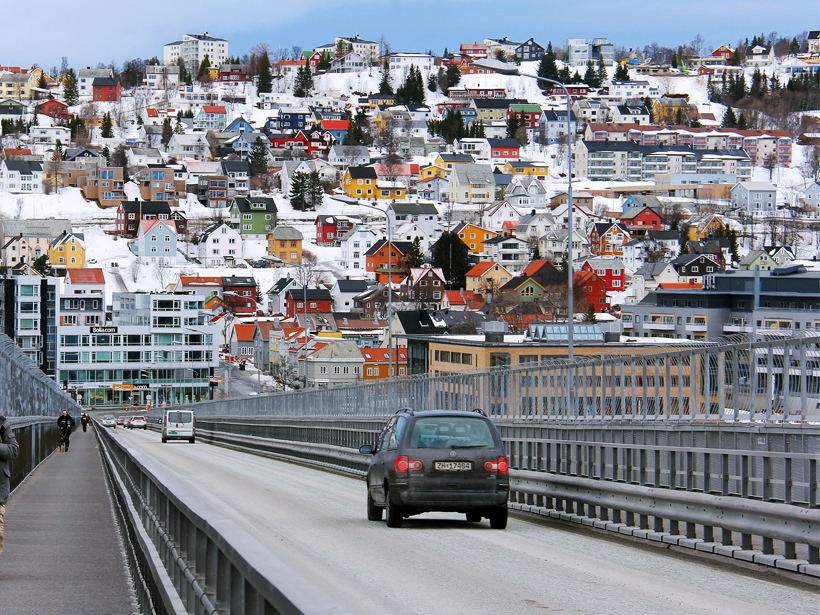Persistent spatial patterns of summer weather extremes in the northern hemisphere recorded in tree ring growth records provide a thousand-year history of jet stream ‘wave5’ dynamics.
jet stream
The Mid-20th Century Winter Cooling in the Eastern U.S. Explained
A new analysis of historical jet stream behavior reveals that increases in jet stream waviness accounted for 55-71% of winter cooling in the eastern United States from 1958 to 1988.
First 3D Map of Exoplanet Weather Reveals Superfast Jet
New observations also answer a long-standing question about where this ultrahot planet keeps its titanium.
Aerosols Could Be Weakening Summertime Circulation
Anthropogenic aerosol emissions may be a culprit behind weakening jet streams and weather systems in the Northern Hemisphere.
The Complexity of Clouds, Circulation, and Climate
A new book explores the significant influence of clouds on climate via radiation, circulation, and precipitation.
A 150-Day Periodicity is Revealed in the Southern Extratropics
An internally generated 150-day periodicity is newly identified in the Southern Hemisphere extratropical large-scale atmospheric circulation, which arises from the annular mode’s propagating regime.
Mesoscale Convective Systems Impact Synoptic Wave Forecast
Scientists provide a process-level understanding of how mesoscale convective systems modify the evolution of the large-scale Rossby wave packet downstream and the jet stream.
Global Warming Intensifies Turbulence Over Northern Eurasia
A significant increasing trend of turbulence in upper atmosphere over northern Eurasia is attributed to intense anthropogenic activities.
Pollution over the Tibetan Plateau Linked to Sea Ice Loss in the Arctic
New research suggests an atmospheric connection between Arctic sea ice melt and anthropogenic aerosol pollution over the Tibetan Plateau.
Cleaner Air Takes Some of the Bite out of European Winters
Scientists find that reduced aerosol emissions correspond to fewer extremely cold days.

